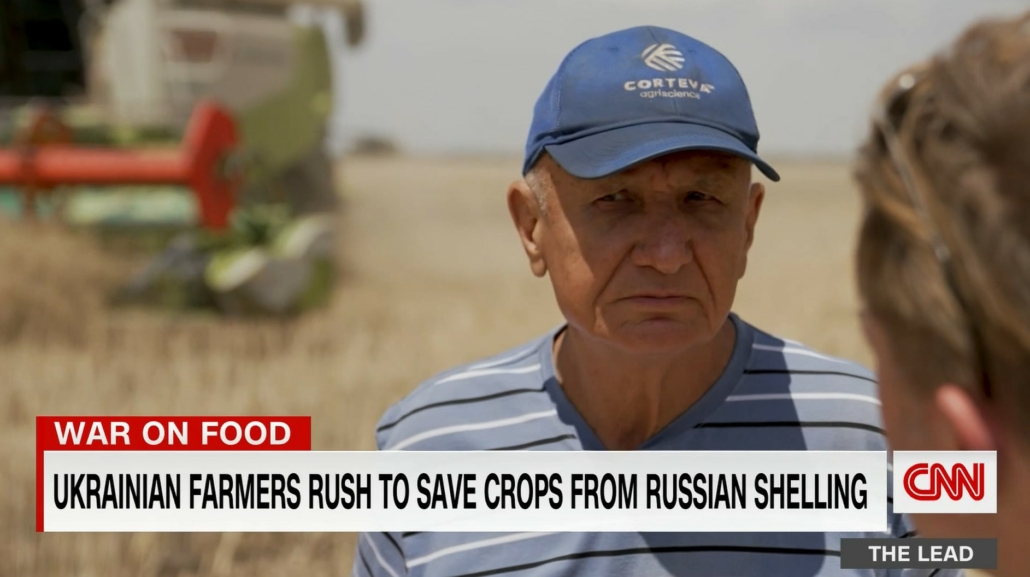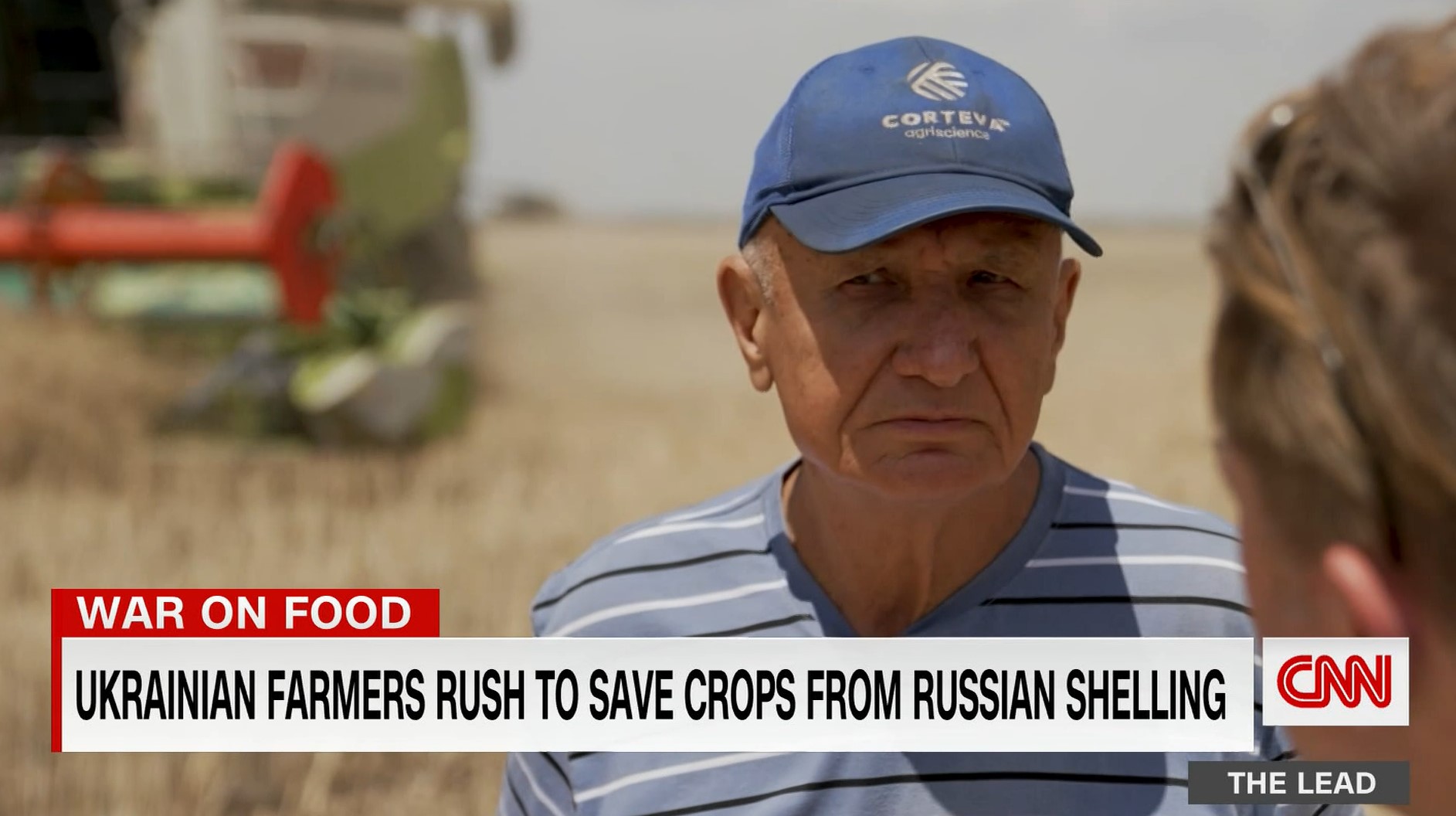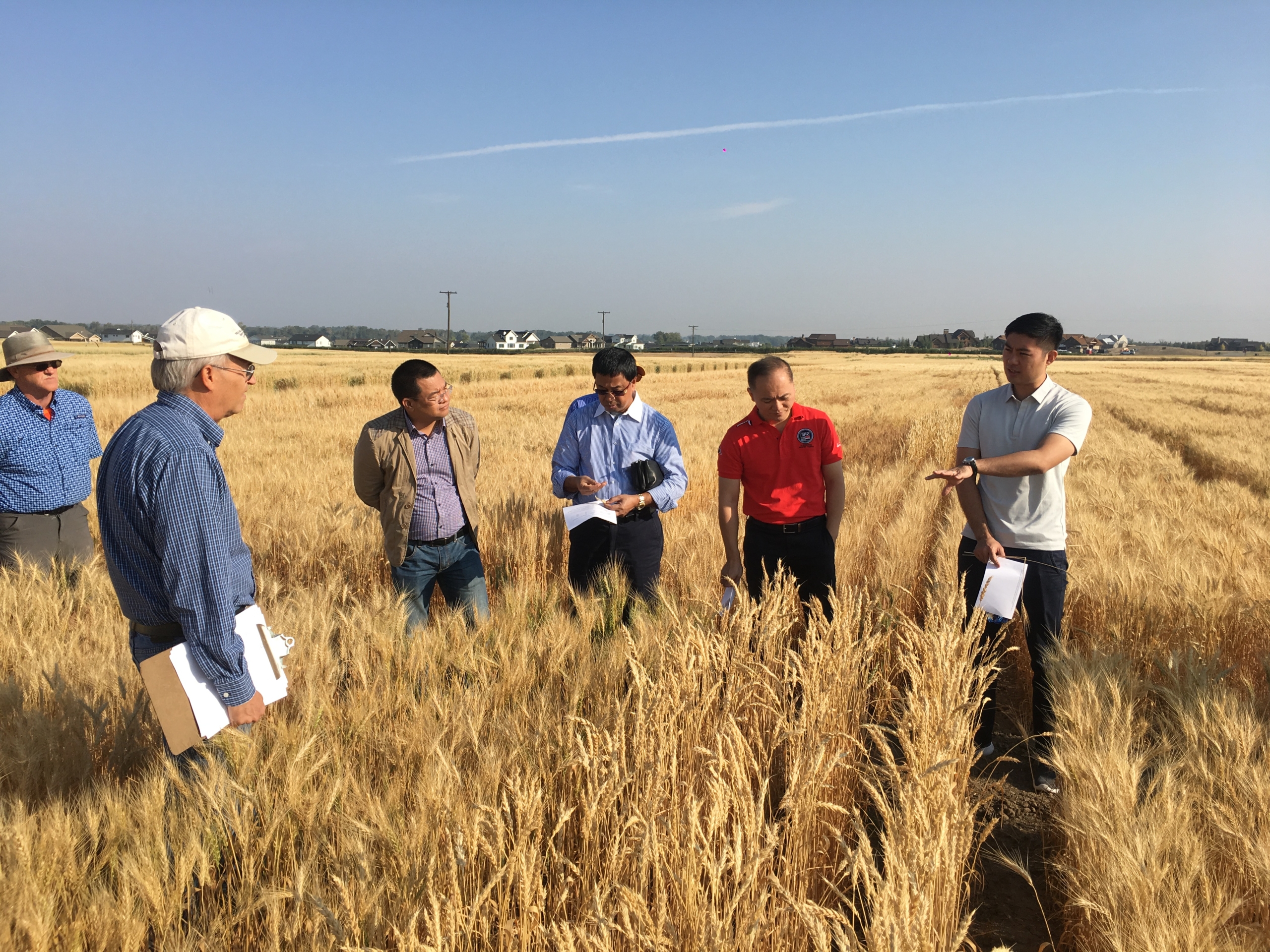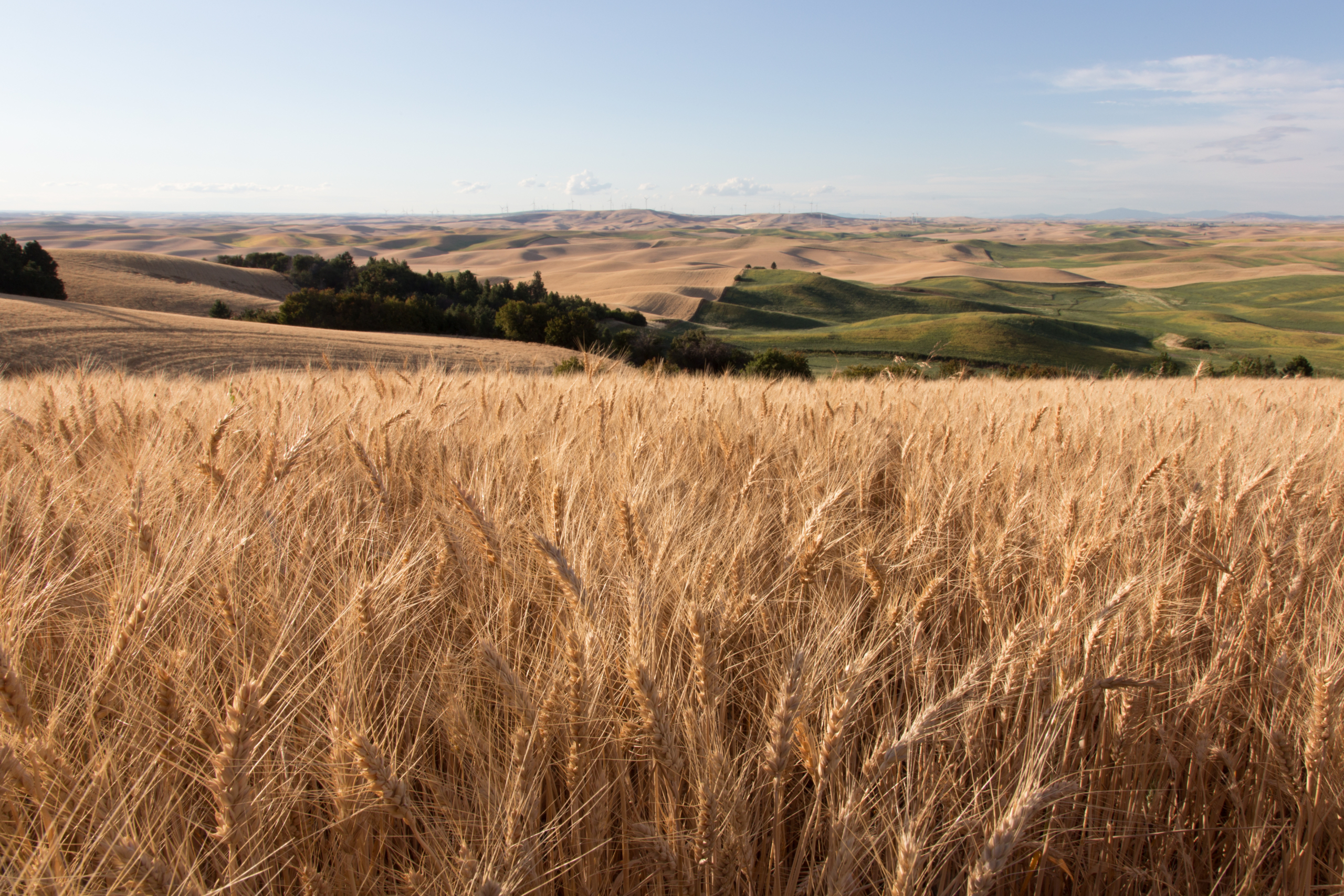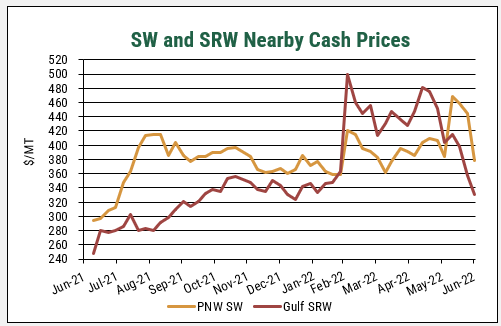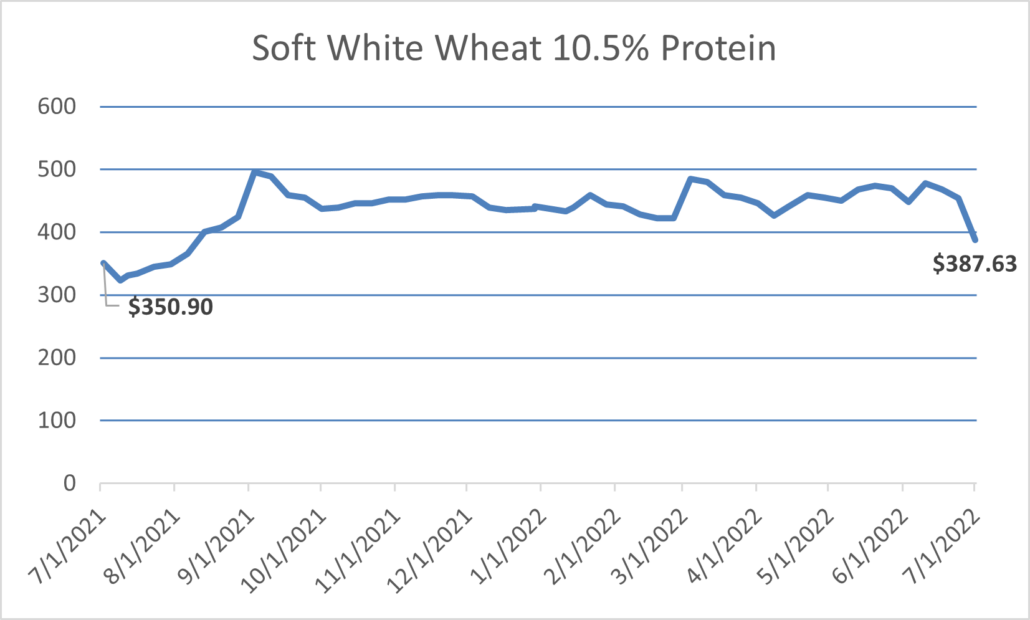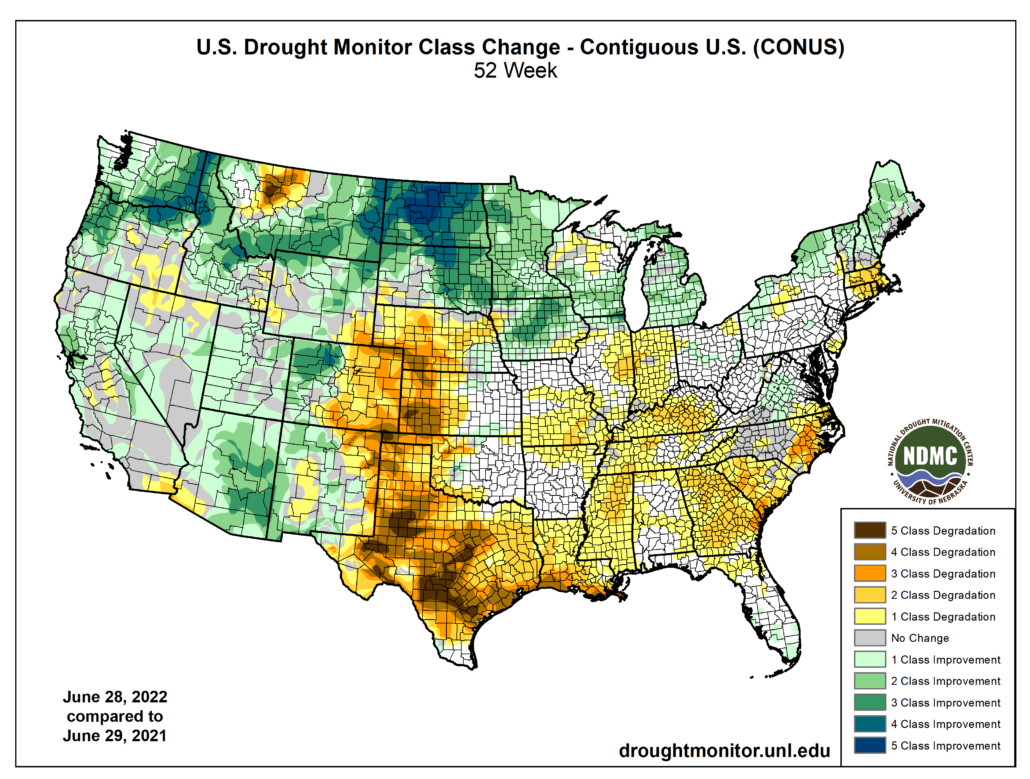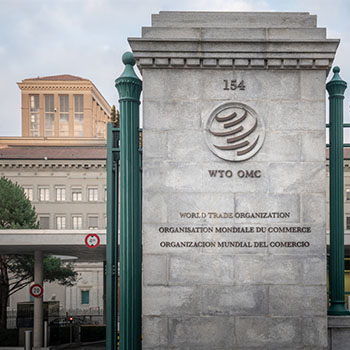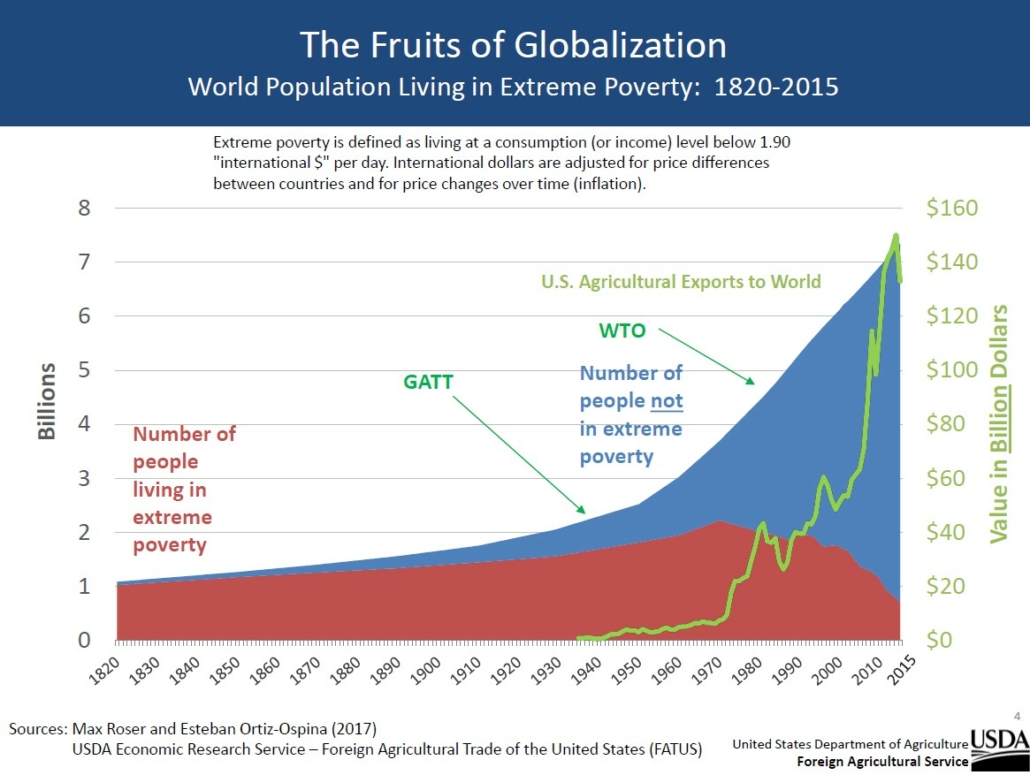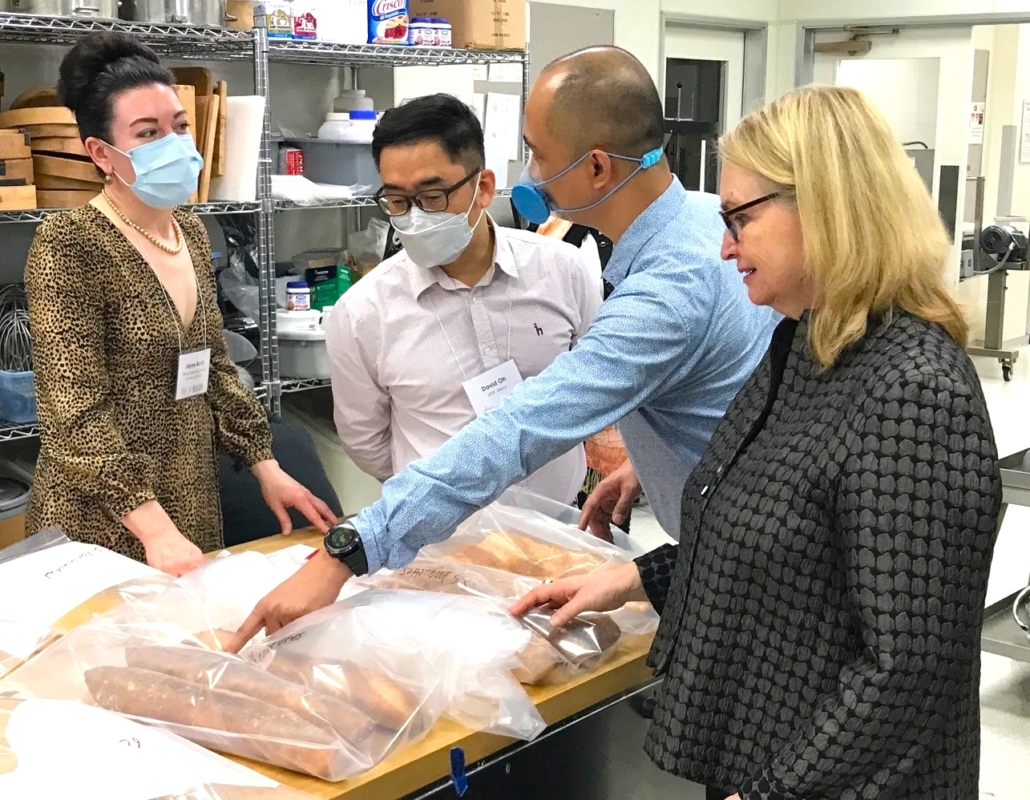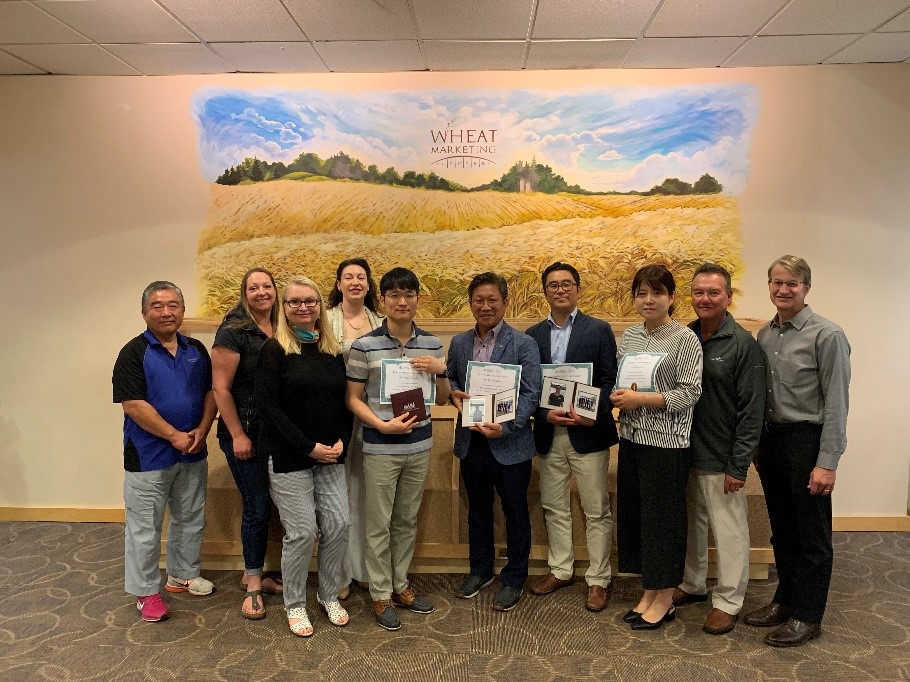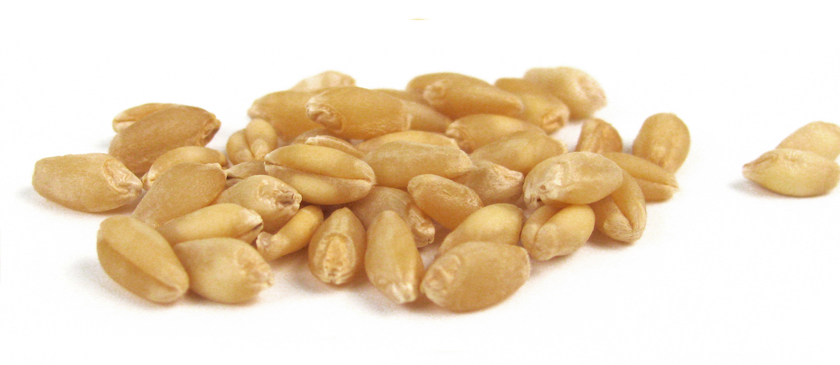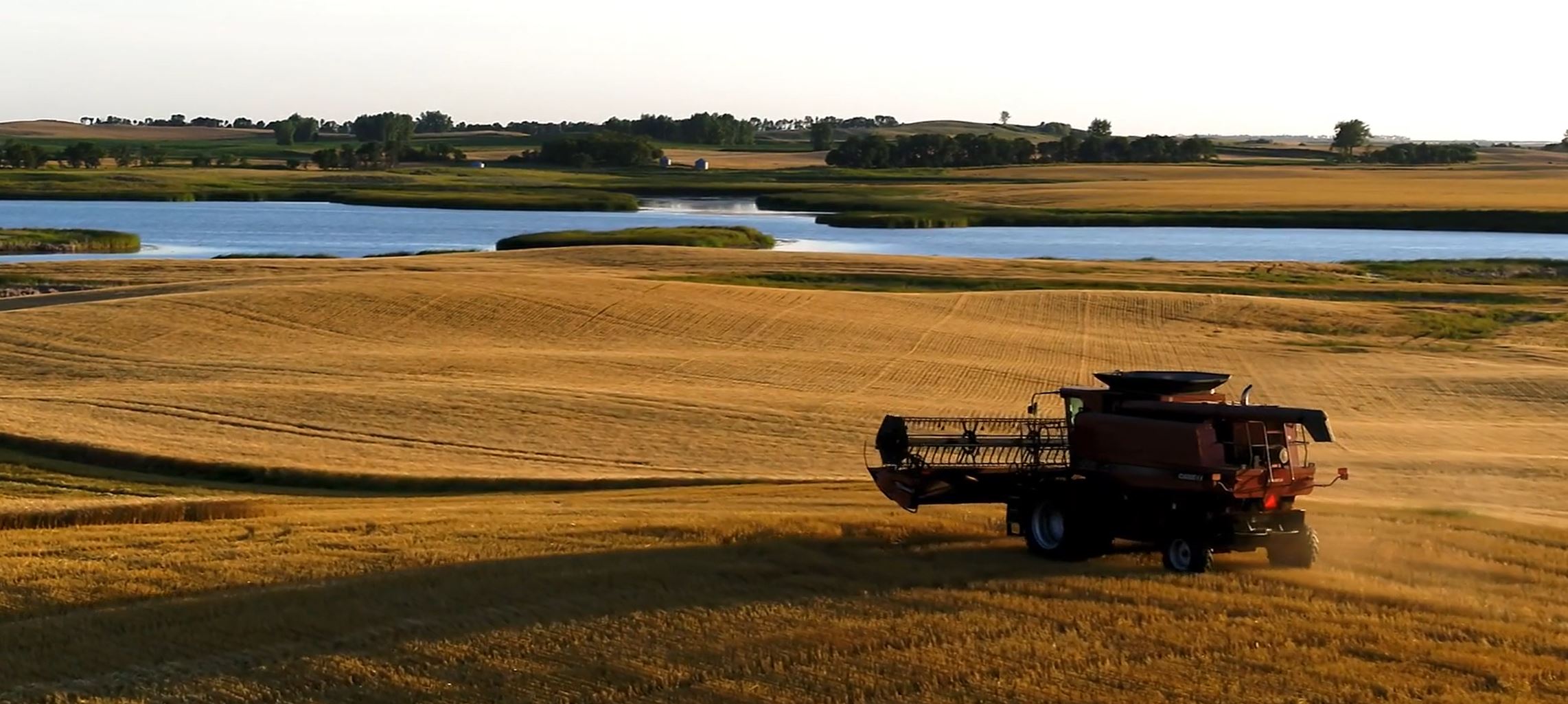The 2022 U.S. wheat harvest is well underway across several states. U.S. Wheat Associates (USW) reports on its progress as well as crop conditions and current crop quality for hard red winter (HRW), soft red winter (SRW), hard red spring (HRS), soft white (SW) and durum wheat. These weekly Harvest Reports are published every Friday afternoon, Eastern Daylight Time, from May to October. Anyone interested in receiving this report directly to their email inbox can subscribe here. Updates and photos are also shared on Facebook, Twitter and LinkedIn.
Several of USW’s state wheat commission members also share more detailed reports, pictures and stories from wheat harvest in their state. It is important to note that when the U.S. wheat harvest is expected to begin and end from state to state varies each year based on several factors, including weather and if planting was completed on schedule.
Learn how you can follow the U.S. wheat harvest by state below.
Kansas
Wheat harvest in Kansas typically begins in early to mid-June and is complete by mid-July. It starts in the south-central part of the state and moves north and west. Harvest reports are typically published online Sunday through Thursday during the harvest season. Viewers can also sign up to receive these reports via email here. Photos, crop progress and harvest updates are also shared on Facebook, Twitter and Instagram.
Oklahoma
Wheat harvest in Oklahoma typically begins the last weekend in May, around Memorial Day, and is usually complete by the first week of July. It starts in the southwest and south-central part of the state, moves north and west, and then fans out across the northern tier of the entire state. Harvest reports are published weekly on the Oklahoma Wheat Commission website. Updates are also regularly shared on Facebook and Twitter, including photos and videos from wheat farmers across the state.
Texas
Wheat harvest in Texas typically begins in late April to early May and is complete by the beginning of July. It starts along the coastal bend in the southern part of the state, then moves north and west, concluding in the Panhandle. Photos, crop progress and harvest updates are posted on Facebook and Twitter. As harvest begins, updates are regularly posted to the Texas Wheat website.
Colorado
Generally, wheat harvest starts in Southeast Colorado around the third week of June and gradually moves north, typically nearing completion by July 15. Colorado Wheat publishes a weekly crop outlook report that is posted on Facebook, Twitter and its website homepage. Once harvest begins, a report will be published on the same channels approximately twice a week.
Idaho
Idaho wheat farmers typically begin harvesting in early July and continue through the end of August. Harvest starts in the central part of the state and moves north and south. Idaho wheat harvest updates and photos are posted on Instagram and Twitter. The Idaho Wheat Commission also sends an email newsletter on the first Wednesday of the month that includes a crop production report. Those interested can subscribe here or contact their staff here.
Oregon
Wheat harvest in Oregon typically begins in mid-July and is complete by the end of August. Photos, crop progress and harvest updates are posted on Facebook and Instagram.
Washington
Wheat harvest in Washington typically begins in early July and is complete by September. It starts in the west-central part of the state and moves east toward the Idaho state line. Learn more from the Washington Grain Commission on its website, Facebook, Twitter, Instagram and YouTube.
Montana
Montana’s wheat harvest ranges from the end of July to the first week of September. HRW harvest typically begins first and is closely followed by HRS and durum, which is generally ready two to three weeks after HRW. Harvest starts in the south-central portions of the state and moves to the northwest and east. Photos, crop progress and harvest updates are posted on Facebook, LinkedIn, Instagram and Twitter. The Montana Wheat & Barley Committee also publishes monthly crop reports on YouTube, hosts a Live Crop Cam for viewers to check in on that crop throughout its lifecycle, and posts additional updates on its website.
South Dakota
Wheat production in South Dakota is evenly split between HRW and HRS wheat. HRW harvest typically begins in early July, with HRS harvest following in late July and early August. The South Dakota Wheat Commission shares updates in its South Dakota Wheat Outlook on its website and also shares photos and updates on crop progress and harvest on Facebook and Twitter.
North Dakota
The North Dakota Wheat Commission shares weekly crop progress and harvest updates on its website. Those interested can sign up to receive these updates directly to their inbox via the signup box at the bottom of the homepage here. Pictures and updates are also shared on Facebook.
Minnesota
Wheat harvest in Minnesota typically starts at the end of July in the central part of the state and moves north to finish by the end of August. Minnesota Wheat shares a weekly newsletter and other posts from the University of Minnesota Extension on its website, Facebook and Twitter.
Arizona
Arizona’s Desert Durum® wheat harvest typically begins in early May and is complete by mid-July. The Arizona Grain Research & Promotion Council shares updates on Facebook.
Other Sources
Crop Progress and Condition Reports by state are also published by the USDA State Crop Progress and Condition.
Connect with USW’s other state wheat commission members below.
Nebraska
Website | Facebook | Twitter
Maryland
Website | Facebook | Twitter | Instagram | YouTube
Ohio
Website | Facebook | Twitter | YouTube
Wyoming
Website
California
Website | Facebook | Twitter | Instagram | LinkedIn
